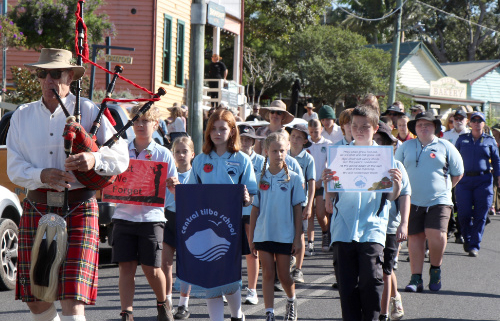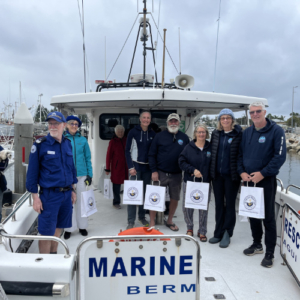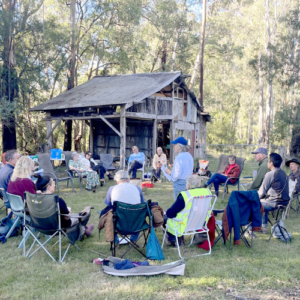Anzac Day at Central Tilba
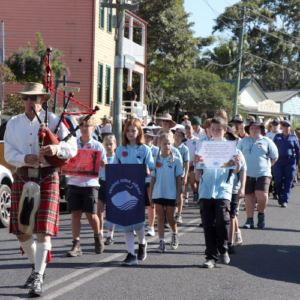 by Stuart Absalom
by Stuart Absalom
ANZAC stands for Australian and New Zealand Army Corps. Anzac Day is a commemoration of the landing of those troops – known as ANZACs – at Gallipoli on 25 April 1915. Today, this annual day of remembrance honours and remembers all Australians and New Zealanders who have served in wars, conflicts and peace-keeping operations and acknowledges the sacrifices of those who have died in service.
This important day is a true community event at Central Tilba and, although it follows the accepted order of service, it is a uniquely local commemoration. Significantly, local school children participate in a special way by leading the march from the Drom and acknowledging and honouring local families whose family members enlisted by recounting their family histories. Researched by local historian, Robyn Lucas, two family histories were presented this year.
The Negus family was represented by Central Tilba Public School children Marcus Toovey, Athena McGrath, Banjo Mulcahy and Gracie Negus. They told the story of the descendants of John and Mary Negus – nine direct descendants, mostly from the Tilba District, enlisted in either World Wars 1 or 2.
The Negus family owned and farmed Oceanview and Oakleigh farms at Corunna, with Oceanview still in the family today. The district was extremely lucky to see all of them come home alive. John and Mary are the great-great-great-grandparents of Gracie and she thinks that her father, Brendan, resembles his grandfather Ellis Negus as described in his medical record on enlistment in 1941. Ellis was the son of Ernest, John and Mary’s youngest child. Gracie also sang ‘The Travelling Soldier’.
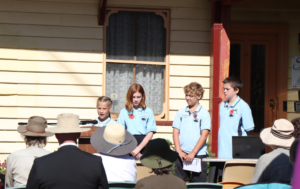
Dali who attends Sapphire Coast Anglican College told the story of Bert Latimer who was born at Glenrock (now Billy McCarthy’s property) in1897, the seventh child of Joseph and Helen Latimer. Bert enlisted in 1916 and saw active service in France. Wounded in 1918, he spent many months in hospital in both France and England, finally landing back in Sydney in 1919 with both legs amputated below the knee. Arriving home to a hero’s welcome, he was granted £100 from the Mumbulla-Dromedary War Service League fund that enabled him to be fitted with artificial legs. After the war, Bert went into business as a hides and skins buyer on the South Coast, purchasing those products from farmers. In 1926, Bert married Dorcas Waldron and, in 1932, the family moved to the Mid North Coast of NSW as did most of his brothers and sisters. In addition to Bert, his older brothers Harold and Frank both joined up in late 1916 and went to France in different units. Both were invalided home to Australia and medically discharged in 1918. Many of Bert’s nephews enlisted and served in the second World War.
The school children were also involved in laying the wreaths, performed by Athena and Duke, and the flag raising, executed by William.
The commemoration service, led by Janine Halasz, included laying wreaths and floral tributes, prepared by Yvonn Deitch and others, for several local groups and organisations whose representatives participated in this tribute. Gillian Kearney, who has researched the significant role of animals in war, spoke about the importance of ships’ cats, both in rodent control and companionship and David Oliphant spoke about the significance of pastoral care during war and the pivotal and supportive role of Padres in providing pastoral care.
John McMahon not only organised and coordinated this special ceremony, he led the march with the sound of his hauntingly beautiful bagpipes. Special thanks to John and all involved including the school children, especially as Anzac Day was in the school holidays.
Images:
(Top) The Anzac Day march Photo: Jane Facchetti
(Bottom) Gracie, Athena, Marcus and Banjo
at Anzac Day Photo: Jane Facchetti
